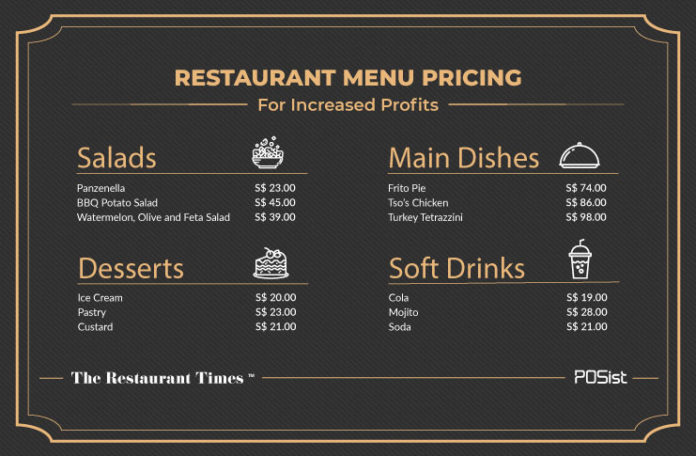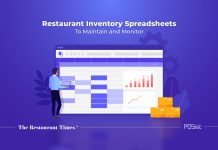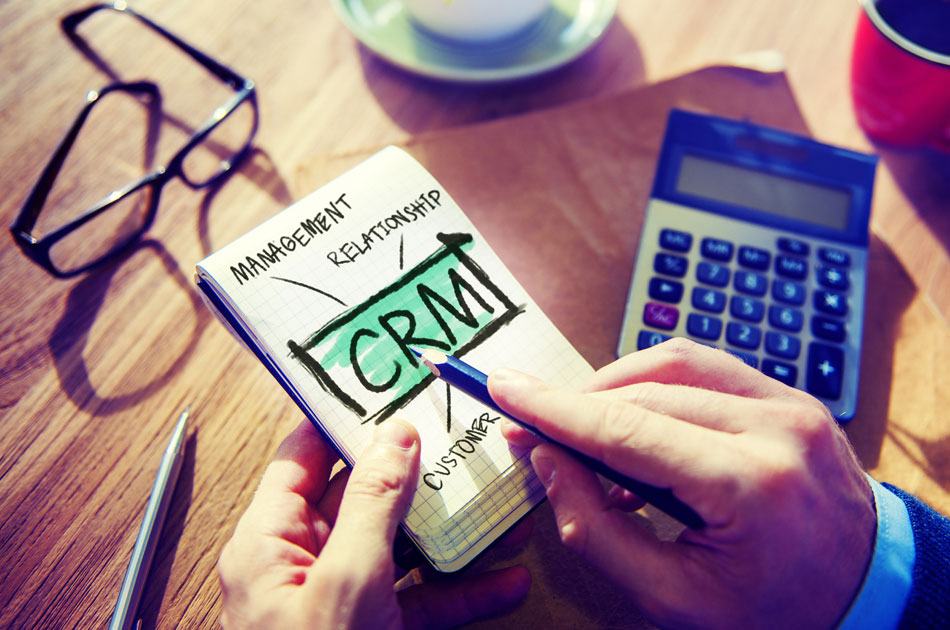Restaurant menu pricing may not be the most looked forward part of running a restaurant, but it is definitely the most important decision which you will take given the cost of running a restaurant in Singapore. Let’s face it, Singapore is the food capital of Asia, but running a restaurant here is an expensive and risky affair. Costs are always on a rise, the staff is short and more restaurants fail than succeed.
Even The Restaurant Association Of Singapore (RAS) has prophesied doom for the industry. In light of these market factors, the way you price your restaurant menu has a significant impact on your restaurant’s success and survival. Your dishes are what will get you money to survive and your menu prices are the price tags which every dish comes with. Hence you must analyze your restaurant menu and ensure that the menu cost must not be so high that the customers run away, but not so low either that you end up not earning any profit.
Hence it will be significant to look at some menu pricing strategies and what to keep in mind while deciding your menu costs.
Practices To Consider While Pricing Your Restaurant Menu
Before we go on to talk about different restaurant menu pricing methods, it will be beneficial to understand some things to consider while pricing the menu. Hence, here are some practices that you must consider while pricing your restaurant menu.
1. Seasonal Ingredients
If you serve dishes which have a seasonal ingredient, it will be better to put it on a seasonal menu. This is so because once the season of the ingredient is over, undoubtedly the raw material will be insanely expensive and the profit margin that you commanded for the dish will fall.
If you wish to include the dish on your regular menu, the basic menu pricing practice would be to factor in the extra offseason costs and adjust the price accordingly. Blueberries, for example, cost as much as S$9.90 a pack when purchased offseason. Factoring this price hike in your calculations and adjusting the price of the dish accordingly will enable you to retain customers and serve the dish when the season is gone, and make enough profits to survive.
2. Volatile Food Costs
Food costs in Singapore are extremely volatile. This creates a troublesome scenario for restaurant owners since the cost of raw material for them keeps dwindling, but along with that, the profit margin keeps changing as well. A viable solution to this is to price the highly volatile foods on the menu at the market price. This is especially beneficial for hawker stands and kiosks where a price hike does not involve extensive re-printing of the menu and a change in offerings.
3. Menu Balancing
To set menu prices which will be psychologically pleasing to your customers, mix the low-cost menu items with high-cost menu items. To keep the prices in control and profits maximum, mix the high-cost ingredients with low-cost ingredients within the same dish as well. Singapore is the world’s second most expensive city to live in after Hong-Kong leading to inflated food prices. Thus creating smart combinations of ingredients is a must if you want to earn a profit at competitive prices.
4. Non-Monetary Expenses
The food you serve does not only cost you as much as the raw material cost. The cost of labor, electricity, depreciation and other such indirect and non-monetary expenses also go into making a menu offering. To truly price your menu right, you must account for these expenses as well and not just pay them out of the profits. Doing so will create an imbalance in your accounts, give you a misleading figure of profits and may eventually run your restaurant dry since the average profit margin for restaurants (fine-dining) in Singapore is 10% as compared to 33% in the states.
5. Inventory And Food Expenses
Most restaurant owners forget to include existing inventory in the total food expenses. This is a common blunder due to which the profits derived are incorrect and misleading, thus leading the restaurant to its doom. Stick to the formulas and equations provided and double check every figure in order to reach correct restaurant menu prices or else you will end up digging your own grave.
Factors Which Impact Restaurant Menu Pricing
Before going on to calculating and finalizing your menu prices, it will be significant to look at various market factors which affect these menu prices in Singapore:-
1. Direct Costs
Direct costs in the simplest terms are the cost of raw material. In the case of a restaurant, the direct cost will be the cost of inventory, including the wastage. The key branches of direct costs for restaurants are:-
- The cost at which the ingredients are brought. This does not include labor costs or transportation charges.
- Cost related to food waste. As mentioned earlier, your direct cost includes the cost of wastage and wasted raw material was still a part of the inventory.
- Cost related to portion sizes. The direct costs will include the variance which occurs while portioning your food and managing your yield.
Higher your direct costs, more the menu price to maintain a constant profit percentage. In a different scenario, higher the direct costs at a given menu price, lesser the profit percentage at the same menu price.
2. Indirect Costs
Remember how we said that you must include non-monetary expenses while calculating your menu prices. Those non-monetary expenses form a part of your indirect costs. Indirect cost is the cost you encounter in preparing a dish excluding the cost of raw material. These include things like the cost of tableware, cutlery, ambiance, lighting, water supply, etc.
Labor expenses are an exclusive part of your indirect costs. The labor that goes into making and serving dishes must be included as salaries. Even when you prepare your Profit & Loss Statement, your labor costs will come under the heading of salaries credited, but following the definition of indirect costs, the salaries and wages which you pay to your staff members to prepare and serve the meals, and to run the restaurant, are a part of your indirect costs and must be considered as such while pricing the menu.
The impact which your labor costs will have on your menu prices depend largely on the format of your restaurant. If you run a fast casual or a self-service restaurant, your service costs will be much lower than what they would have been if you ran a fine dining restaurant. Don’t over-price here as the quality of service must do justice to the prices or else you will lose your customers.
3. Seasonal Costs
These are costs which are volatile and change according to the season. They are accommodated within direct costs, indirect costs, wastage and overhead expenses when calculating your menu price and food costs.
The reason you consider your seasonal costs is not to find the right price for a dish but to find the right balance of dishes within the menu, and the right balance of ingredients within a dish. Your seasonal costs will mostly include what you pay for ingredients like meat, fruits, and vegetables as the prices of these items can fluctuate depending upon the season.
4. Overhead Expenses
Overhead costs are ongoing expenses that come with running a business. These are the expenses you encounter in running your restaurant on a daily or even hourly basis. These are different from indirect costs as overhead expenses include expenditures which will impact the restaurant directly. For example, the marketing budget of the restaurant or the renovation cost of the restaurant. They need to be factored in the restaurant menu prices as the expenses are made to push the restaurant and the restaurant’s food as an offering and so must be paid for from the business itself.
5. Customer Psychology
The psychology of your target audience is denoted by their willingness to pay a certain price for a certain item on your menu. Even though it is a social construct which cannot be computed through a formula, the psychology of your target audience is crucial to deciding your menu prices. Your prices must not reflect negatively on the restaurant’s image, but at the same time must entice your customers and feel worth the experience. Price your dishes too high, and you may lose some customers, as they might not find the food worth the cost.
At the same time, price all your dishes too low and the customers may get an impression that your food is not that hygienic. A good strategy to understand your customer psychology is conducting surveys, following the trends in secondary data and observing your competitor pricing.
6. Competitor Pricing
The price that your competitors are charging for the same dish has a significant impact on your restaurant menu pricing strategy. The price which your competitors are charging can give you relevant insight into the spending habits of your target audience. At the same time, you can not blatantly go by your competitor’s menu prices as well since you do not know their food cost percentage and gross profit margins.
That being said, keep an eye out for your competitor’s prices. You cannot charge more than your competitors unless you are giving exceptional value for the extra charge. At the same time, pricing lower than the industry rates may also have a significant impact on your profits even if it attracts customers.
Methods To Decide The Restaurant Menu Pricing
The final part of the articles deals with strategies to price your restaurant menu. Here we have for you three methods widely followed in the restaurant industry of Singapore in order to decide your food prices.
1. Traditional Menu Pricing
These are pricing strategies which used to be followed when more reliable methods of calculating prices were not that popular, the competition was less, and the target audience was not that diverse. Traditional pricing methods marked the nascent stage of the restaurant sector in Singapore when prices depended upon the industry trend, service, food, and food quality was not too consistent and the initial wave of the restaurant industry was just hitting the shores of the island. As globalization and immigration changed the face of the nation along with technology and trade, the pricing game changed as well and the traditional pricing methods were turned into mere factors to consider. Even for small restaurants, kiosks and hawker stalls in Singapore, these methods are not recommended to be used as the absolute authority to decide your menu costs. Traditional menu pricing methods include:-
- Intuition: Using the price which feels right by experience.
- Competition: Using the price followed by the competitors.
- Leader Prices: Using the price followed by the industry leader.
- Customer Psychology: Using the price which you think the customers would be ready to spend.
While not to be used as ultimate factors to base your restaurant menu pricing strategy on, you must consider these factors as they will play a role in finalizing your carefully and numerically calculated menu costs.
1. Product Cost Percentage Pricing
In this method, you arrive at the menu cost by using the targeted ideal food cost percentage and the potential cost of an item. The targeted ideal food cost percentage is how much an establishment hopes to spend on a menu item. To find out your potential food cost, divide the total costs by total sales and multiply it by 100, i.e.:-
Food Cost Percentage= (Total Costs/Total Sales) X 100
Now putting the method in perspective, if the targeted ideal cost percentage is set at 25% and the potential cost of the menu item is S$5, the equation would look something like this: 5 / .25 = 20, with 20 being the price (S$20).
2. Cost Plus Markup Pricing
This menu pricing strategy involves an understanding of the concepts of markup percentage, gross profit percentage, and net profit percentage.
- Markup Percentage: Markup percentage is the increase on the original selling price. The markup sales are expressed as a percentage to ensure that the restaurant receives a proper amount of gross profit margin. The purpose of the markup percentage is to find the ideal sales price for your dishes. To calculate your markup percentage, divide your gross profit by your unit cost and multiply the figure by 100.
Markup Percentage= (Gross Profit/ Unit Cost) X 100
- Gross Profit Percentage: Gross profit percentage is the amount you earn as a proportion of total sales in relation to the cost of creating the dish. But this figure does not factor in your fixed expenses as it is derived from the cost of goods sold which includes only the variable expenses. This means that if the gross profit percentage is 30% then for every dollar earned, 3 cents are the gross profits. A typical gross profit percentage for restaurants in the USA is 33%, but it is better to keep this figure as high as possible. To calculate your gross profit margin, deduct your cost of goods sold (COGS) from your total sales, divide it by the total sales and multiply the figure by 100.
Gross Profit Percentage= [( Total Sales – COGS)/ Total Sales] X 100
- Net Profit Percentage: This is the actual profit percentage that a restaurant earns as it is derived from profit after you have paid all the expenses. Thus, it is the percentage of net profit that the restaurant earns per dollar earned in sales. This means that if the net profit percentage is 30% then for every dollar earned, 3 cents is the net profit. Your net profit percentage will always be less than your gross profit percentage. To calculate your net profit percentage, find your net profit, divide it by total sales and multiply the figure by 100.
Net Profit= Total Sales – COGS – Total Fixed Costs.
Net Profit Percentage= (Net Profit/Total Sales) X 100
In this menu pricing method, you take the cost that goes into making a dish and add to it a markup cost based on your markup percentage.
Now if it costs S$10 to make a dish, and you desire your gross profit percentage to be 30% you should work with a markup price which is slightly higher than that so that your net profit percentage comes close to that figure. Let’s say your markup percentage is 35% so you will sell the dish for S$45.
At this stage consider your competitor pricing, leader pricing, and customer psychology to tweak the price accordingly.
Your restaurant menu prices may be the difference between your restaurant’s success and closure. Choose them wisely using these tips and methods to survive in the ruthless restaurant space of Singapore.

















